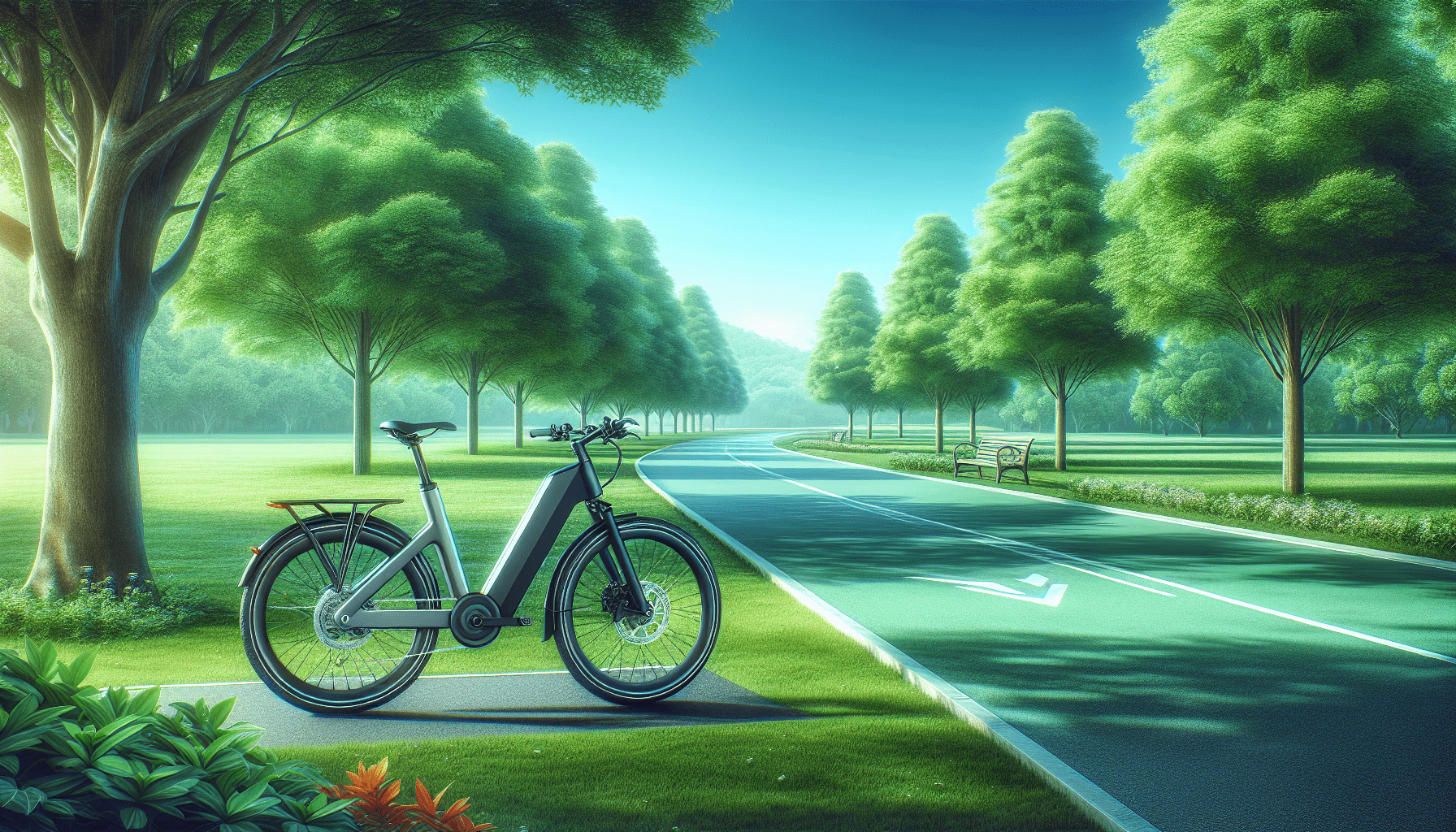In our daily lives, each small action can contribute to a larger change, especially when it comes to protecting our environment. In the article “How Can I Make My Daily Commute More Eco-friendly?”, we explore practical and simple ways we can reduce our carbon footprint while traveling to and from work. From opting for public transportation or carpooling with colleagues to embracing greener modes of transport, such as biking or electric vehicles, there are numerous steps we can take to make a positive impact. By incorporating these habits into our routine, we not only help sustain our planet but also cultivate a healthier community for us all to enjoy. Have you ever wondered, “How can I make my daily commute more eco-friendly?” Most of us spend a considerable amount of time commuting each day. Whether we drive, take public transport, bike, or walk, each mode of transportation impacts the environment in various ways. In this article, we’ll delve into practical steps and considerations we can take to reduce our environmental footprint during our commutes.
Why Should We Consider an Eco-Friendly Commute?
Before we dive into the “how”, let’s understand the “why”. Choosing eco-friendly commuting options isn’t just a trend; it’s a critical move for our planet. Transportation is one of the largest sources of greenhouse gases. By opting for more sustainable travel methods, we can reduce carbon emissions, improve air quality, and promote overall environmental health. Beyond that, embracing greener commuting habits may also save us money, improve our health, and even reduce commuting stress.
Environmental Impact
The transportation sector significantly contributes to air pollution and climate change. Cars, buses, and other vehicles emit a variety of pollutants, including carbon dioxide (CO2), nitrogen oxides (NOx), and particulate matter, all of which have detrimental effects on our planet and health. Reducing these emissions by adopting eco-friendly commuting habits can make a substantial difference.
Personal Health and Wellbeing
Eco-friendly commuting isn’t just good for the planet—it’s good for us too. Walking and biking promote physical health by providing regular exercise, which is linked to lower risks of various chronic diseases. Using public transportation can also reduce stress as it eliminates the pressures of driving through traffic and finding parking.
Financial Benefits
Let’s face it: driving can be expensive. Costs associated with fuel, maintenance, insurance, and parking add up quickly. Utilizing alternative, eco-friendly commuting options can lead to significant cost savings over time. For instance, carpooling cuts fuel expenses, while biking and walking have virtually no costs associated with them.
Assessing Our Current Commute
The first step to making our daily commute more eco-friendly is to assess our current habits. How do we currently travel? Are we driving solo, using public transit, carpooling, biking, or walking? Understanding our baseline will help us identify areas where we can make meaningful changes.
Personal Vehicle Use
If we primarily rely on personal vehicles for commuting, it’s important to consider our vehicle’s fuel efficiency and the distance we travel. How much fuel do we consume weekly? Are we driving a fuel-efficient or electric vehicle? Additionally, evaluating our driving habits, such as idling time and route efficiency, could provide areas for improvement.
Public Transportation
For those utilizing buses, trains, or other public transit options, let’s look at the frequency and reliability of these services. Do we have multiple routes or scheduling options? Are there incentives for using public transport in our area, such as discounts or employer-sponsored programs?
Alternative Methods
Exploring other existing habits can be eye-opening. Do we occasionally bike or walk? Have we ever tried carpooling or using ride-sharing apps? How feasible would it be to incorporate these methods more regularly?

Practical Steps to an Eco-Friendly Commute
With our current habits assessed, it’s time to explore steps we can take to make our daily commute more sustainable.
Opt for Public Transportation
Public transport is a more sustainable alternative to driving solo. Buses, trains, and subways usually have lower per-passenger emissions compared to single-occupancy vehicles. By taking public transit, we can reduce our individual carbon footprint significantly.
Benefits of Public Transportation:
- Reduced Greenhouse Gas Emissions
- Lower Traffic Congestion
- Potential Cost Savings
We should also advocate for improved public transit systems, such as cleaner buses and more efficient routes, to make this option even more appealing and effective.
Carpooling
Carpooling is an excellent way to reduce the environmental impact of commuting. By sharing a ride with colleagues, friends, or family, we can lower the number of vehicles on the road, decrease emissions, and save money on fuel.
| Benefit | Description |
|---|---|
| Reduced Emissions | Fewer cars mean lower overall emissions. |
| Cost Savings | Share fuel and parking expenses. |
| Social Benefits | Build relationships and reduce commuting stress. |
Use Bicycles
Cycling is one of the most environmentally friendly modes of transport. It produces no emissions, improves our physical health, and is quite enjoyable. While not all commute routes are bike-friendly, many cities are developing better infrastructure for cyclists.
Tips for Biking to Work:
- Plan a safe and convenient route.
- Invest in proper safety gear, such as helmets and lights.
- Consider using electric bikes for longer distances or challenging terrains.
Walking
For those who live close to work, walking is the simplest and most eco-friendly commuting option. It’s great exercise, costs nothing, and has zero environmental impact.
Advantages of Walking:
- No emissions.
- Improves physical health.
- Can be a stress-free way to start and end the day.
Remote Work and Flexible Hours
One of the best ways to reduce commuting emissions is to eliminate commutes altogether. Telecommuting or working from home, even part-time, can significantly cut down on our environmental impact. If possible, discussing flexible hours with employers can also help us avoid peak traffic times, reducing both congestion and stress.
Consider Cleaner Vehicles
If driving is unavoidable, choosing a more eco-friendly vehicle can make a big difference. Electric cars (EVs) and hybrids produce fewer emissions than traditional gasoline-powered cars.
Benefits of EVs and Hybrids:
- Lower greenhouse gas emissions.
- Potential fuel cost savings.
- Incentives such as tax credits and rebates.
Maintain Your Vehicle
Keeping our car in good working order can also make a significant impact on our commute’s eco-friendliness. Simple maintenance routines, like regular oil changes and tire pressure checks, can improve fuel efficiency and reduce emissions.
| Maintenance Task | Frequency | Environmental Benefit |
|---|---|---|
| Oil Changes | Every 3,000-5,000 miles | Ensures smoother engine performance and efficiency. |
| Tire Pressure Check | Monthly | Properly inflated tires improve fuel efficiency. |
| Air Filter Replacement | Every 15,000-30,000 miles | Clean filters reduce fuel consumption and emissions. |
| Engine Tune-Ups | As recommended | Well-tuned engines operate more efficiently. |
Supporting Eco-Friendly Policies and Initiatives
In addition to changing our habits, we can support policies and initiatives designed to promote sustainable transportation. Advocacy and community involvement can lead to broader changes that benefit everyone.
Advocate for Better Public Transit
Supporting local initiatives to improve public transportation can make it easier and more attractive for everyone to use. This includes pushing for cleaner, more efficient buses, better routes, and more frequent services.
Bike-Friendly Infrastructure
Communities that invest in bike lanes, bike-sharing programs, and secure bike parking make cycling a more viable option for more people. We can advocate for these improvements in our own communities.
Workplace Initiatives
Encouraging our employers to support eco-friendly commuting can lead to positive changes. This could include providing incentives for using public transportation, creating carpooling programs, or offering facilities for cyclists and walkers.

Tech Solutions to Aid Eco-Friendly Commuting
Technology can play a crucial role in helping us achieve a greener commute. Various apps and tools can simplify the process and make eco-friendly options more accessible.
Navigation Apps
Navigation apps like Google Maps and Waze can help us find the most efficient routes, avoiding heavy traffic and reducing idling time, which saves fuel and cuts emissions.
Carpooling Apps
Apps like BlaBlaCar, Carma, and Liftshare connect us with others looking to share rides. This can simplify the process of finding carpool partners and make our commute more social and enjoyable.
Public Transit Apps
Many public transit systems have apps that provide real-time updates on schedules, routes, and delays. These apps can help us plan our trips more efficiently and reduce the need for waiting times.
Biking and Walking Apps
Apps like Strava, MapMyRide, and Walkmeter can track our biking and walking routes, helping us find the safest and most efficient paths. They can also provide motivation by tracking our progress and setting goals.
Overcoming Common Barriers to Eco-Friendly Commuting
While the benefits of eco-friendly commuting are clear, we may face barriers that make it challenging to adopt greener habits. Understanding and addressing these obstacles can help us stay committed to making sustainable choices.
Convenience
Many of us choose cars for their convenience and flexibility. To make eco-friendly options more appealing, we can start small. For example, we might commit to using public transport one or two days a week, gradually increasing as we become more comfortable.
Safety Concerns
Safety can be a major concern, especially for biking and walking. Investing in proper safety gear, like helmets and reflective clothing, and choosing well-lit, populated routes can mitigate some of these concerns.
Lack of Infrastructure
In some areas, infrastructure for biking and public transportation is lacking. While it can be challenging, joining local advocacy groups and voicing our needs to local government can spark change over time.
Time Constraints
We often perceive eco-friendly commuting options as time-consuming. Using navigation and transit apps to plan efficient routes and schedules can demonstrate that these options might not be as time-intensive as we thought.

How to Get Started
Making our commute more eco-friendly may feel overwhelming, but starting with small, manageable changes can lead to big impacts over time.
Start Small
We don’t need to overhaul our entire routine immediately. Starting with one or two small changes and gradually incorporating more can make the process less daunting. For instance, we could start by carpooling once a week or taking public transport on alternate days.
Set Goals and Track Progress
Setting realistic, achievable goals can keep us motivated. For example, we might aim to reduce our driving days from five to three per week within the next month. Tracking our progress can provide a sense of accomplishment and encourage us to continue.
Celebrate Milestones
Recognizing and celebrating our efforts, no matter how small, can keep us motivated. Every step towards a more sustainable commute is a win for us and the planet.
Real-Life Examples and Success Stories
Hearing about how others have successfully made their commutes more eco-friendly can inspire and motivate us. Here, we’ll share a few real-life examples and success stories.
Case Study: Sarah’s Bike Commute
Sarah, a marketing professional, decided to start biking to work to improve her health and reduce her carbon footprint. Though initially hesitant due to safety concerns, she found a bike-friendly route and invested in quality safety gear. Within a few months, Sarah noticed significant improvements in her fitness and mental health, and she saved money on fuel and parking.
Case Study: John’s Carpooling Initiative
John, an IT manager, organized a carpooling program at his office. By encouraging colleagues to share rides, he helped reduce the number of cars on the road and built a stronger sense of community in the workplace. The initiative was so successful that the company began offering incentives for carpooling employees.
Case Study: Community Advocacy for Public Transit
A neighborhood in a small town advocated for better public transit options. Through community meetings and collaborating with local government, they managed to improve the bus routes and schedules. As a result, more residents began using public transit, reducing traffic congestion and lowering the community’s overall emissions.

Final Thoughts: Every Effort Counts
Making our daily commute more eco-friendly is an achievable goal that offers numerous benefits for us and the environment. By assessing our current habits, exploring alternative methods, supporting eco-friendly initiatives, and using technology to our advantage, we can make meaningful changes. Every effort, big or small, contributes to a healthier planet and a more sustainable future.
Let’s take on the challenge together and make our daily commutes as eco-friendly as possible. With dedication and a proactive approach, we can drive positive change, one commute at a time.




